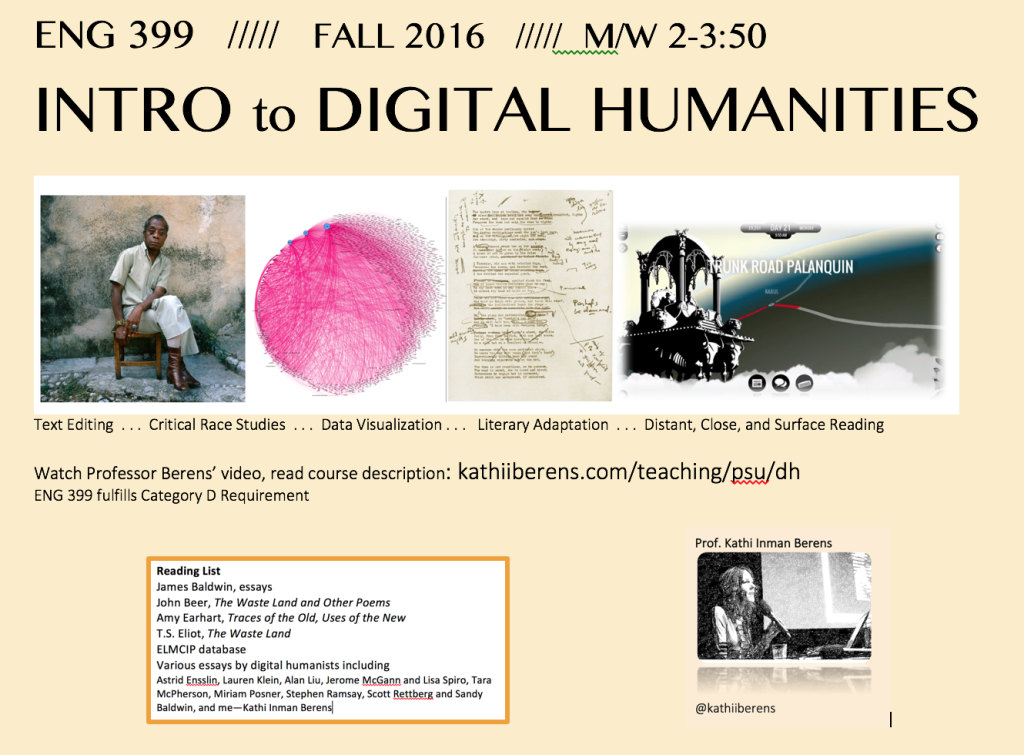Scroll to see flyers and links to the course descriptions, which include 2-minute explanatory video overviews.
Introduction to Digital Humanities
What is Digital Humanities?
Digital humanities is a broad designation that describes literature, history and library/information science subfields that share the common trait of using computers as tools to rejigger the traditional work of the humanities, that is, information organization and human interpretation.
For our purposes in the English department at PSU, I present an overview that bridges the traditional study of print-based literature to the new possibilities offered by computers and networked communication. You’ll see in the course description below emphasis on concepts like adaptation and “remix,” close reading and “distant” and “surface” reading, critical race theory and “archival silences.”
In this class, you’ll learn how computers give humanists a much bigger sandbox in which to play with and test ideas. You’ll do this yourself in both creative and traditional scholarly assignments where you experiment firsthand with new interpretational possibilities offered by computational thinking.
//////////

Students in my fall 2015 Transmedia class built this Instagram post to promote the Ooligan Press launch of A Series of Small Maneuvers.
Transmedia Marketing for Book Publishers
What is Transmedia Marketing?
“Transmedia” typically refers to “world building” across media platforms: imagine the Marvel Comics movies, games, action figures, fan fiction, apparel, toys, books, graphic novels and comics.
“Transmedia Marketing” is the use of cross-channel promotion across media platforms (Facebook, Twitter, Tumblr, Instagram, Snapchat, YouTube) to build grassroots support for one’s campaign. It creates social media presence where fans can seize the opportunity to express their passion for (in our case) a book. Transmedia Marketing reaches a broad audience of “lurkers” who see the posts but don’t leave a trace of their consumption (that is, they may not “like” or share the post, but they read it nonetheless).
//////////





